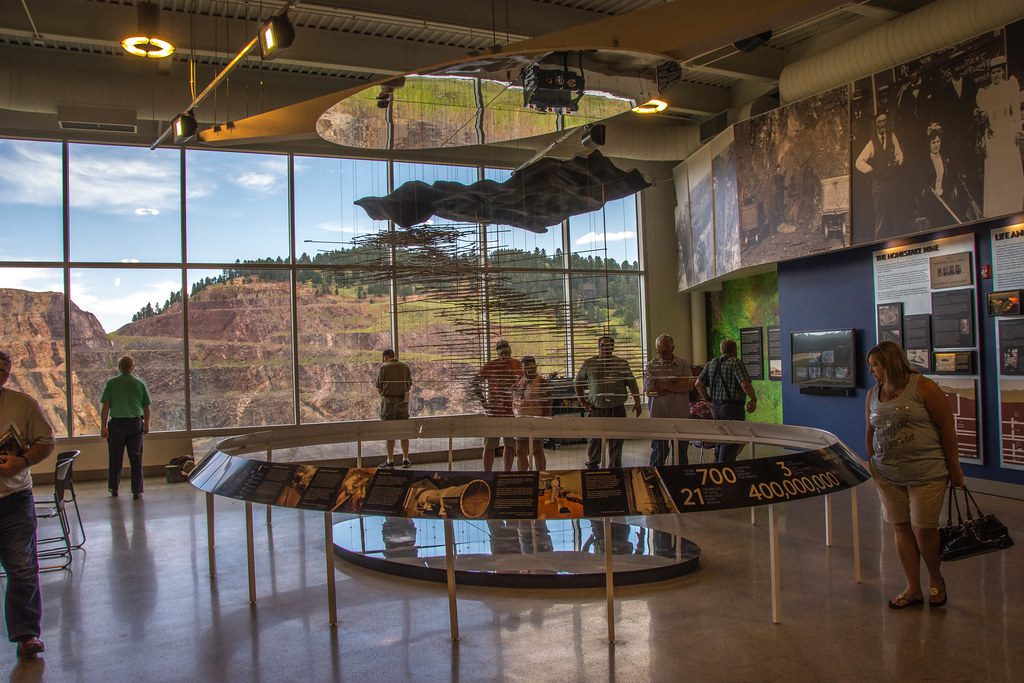The Sanford Underground Research Facility (SURF), or Sanford Lab, is an underground laboratory in Lead, South Dakota. The deepest underground laboratory in the United States, it houses multiple experiments in areas such as dark matter and neutrino physics research, biology, geology and engineering. There are currently 28 active research projects housed within the facility, 24 of which include professors, undergraduate and graduate students from South Dakota universities.
The facility is housed at the previous Homestake Gold Mine, a deep underground gold mine founded during the Black Hills Gold Rush in 1876. In the late 1960s, the mine hosted the Homestake experiment. The Homestake experiment publicized the mine as a resource among scientific communities.
When the Homestake Mine closed in 2002, the National Science Foundation (NSF) had already considered the facility as a possible future site for the United States’ Deep Underground Science and Engineering Laboratory (DUSEL).
Sanford Lab is managed by the South Dakota Science and Technology Authority (SDSTA). SURF operations are funded by the U.S. Department of Energy through Fermi National Accelerator Laboratory and through a generous donation ($70M) from T. Denny Sanford. The State of South Dakota also contributed nearly $70 million to the project.
Sanford Lab also hosts public outreach events, including Deep Talks Science for Everyone series and a city-wide science festival, Neutrino Day, which draws 1,500 attendees annually. While public tours of the facility are not available, in 2015, Sanford Lab built the Sanford Lab Homestake Visitor Center. Overlooking the ridge of the 1,000-foot-deep Open Cut, the visitor center promotes public appreciation of Lead’s rich mining history and an understanding of the science advancing at Sanford Lab.
According to en.wikipedia. Source of photos: internet








